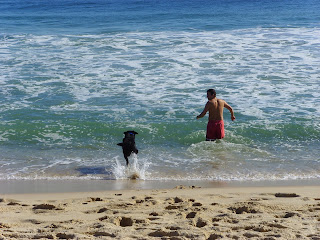At the end of May, Perth was all a buzz with the launch of the truffle season, or at least I was all a buzz with the launch of the truffle season. Living three hours north of the largest truffle producer in the southern hemisphere, I was keen to learn more about this rare fungus. With the truffle season soon coming to an end, I finally had my chance this weekend at the Mundaring Truffle Festival in “the hills,” an area 30 minutes east of Perth which comprises the rolling hills and small towns on the outskirts of the Perth metropolitan area.
The Mundaring Truffle Festival was an opportunity to eat everything truffle, purchase truffle products, and learn a bit about truffles, including watching truffle sniffing dogs in action. With options such as truffle risotto, wagyu beef burgers with truffles, and truffle pizza, I made sure I arrived on an empty stomach.
Nearly half of the world’s Black Truffles are harvested in France and Southern Hemisphere production didn’t begin until the late 1980’s in New Zealand. Today, Western Australia (specifically the southern region) is the largest producing truffle state in the largest producing truffle country in the southern hemisphere. The cultivation first came about in an effort to satisfy the large truffle markets of Europe and America during their off season. This time of year, West Australian truffles are flown to top restaurants all over the northern hemisphere. Eating local produce is all the rage these days but truffles are an exception.
So how do you grow them? Well, you don’t really. It’s a delicate combination of the right temperatures (hot summers and cool but not too cold winters), the right amount of rainfall (at least 700mm a year), the right type of soil (free draining with a ph of 8), the right trees (mostly oak or hazelnut), some well trained dogs (usually a retrieving or hunting breed such as labradors or beagles), and lots of patience (about 5 to 10 years for the first crop to sprout). Truffles begin to grow around the roots of the trees during summer and are harvested in winter. The dogs, or sometimes pigs, detect the smell and a knowledgeable grower digs them up and determines if they are ready to be released from the ground. And about that smell. I smelled my first fresh truffle today and I can best describe it as a mix of earth and vodka. Most commonly it’s described as smelling like old socks and sex which for some is kind-of like earth and vodka I suppose.
We left the festival with our bellies full of truffle infused foods and local wine and for $40 I came home with truffle oil, truffle mustard, and truffle butter from the Wine and Truffle Company. It’s safe to say, I’m all stocked up on old socks and sex.
not just for savory dishes,
a custard and truffle tart
a truffle under the cup
goodies from the Wine & Truffle Co.































